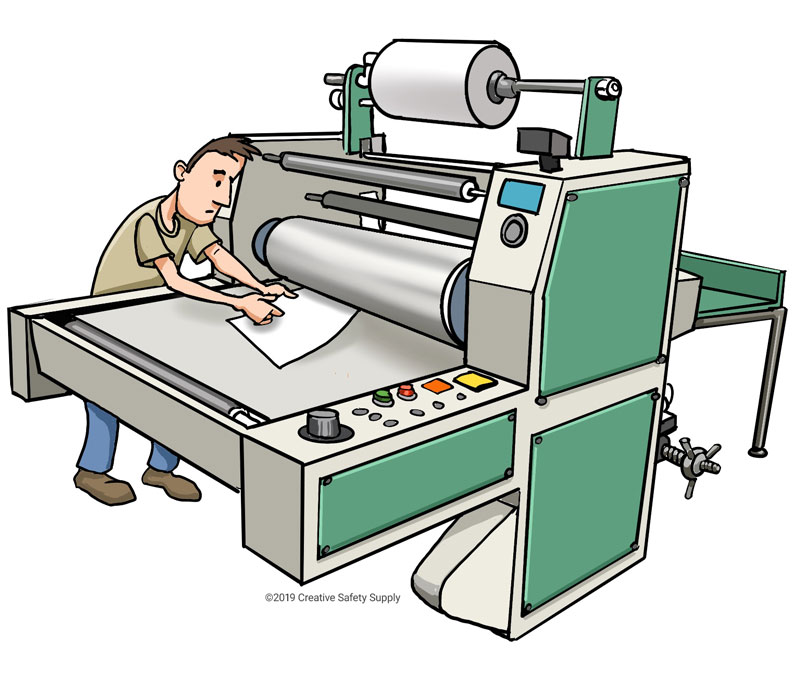
A pinch point, also called a nip point, is a point on a machine where a person or a part of their body can get caught in between moving parts. Gears, rollers, belt drives, and pulleys are all examples of typical pinch points in the workplace. OSHA standard 1910.211 provides guidance on what constitutes a nip point:
 "Pinch point" means any point other than the point of operation at which it is possible for a part of the body to be caught between the moving parts of a press or auxiliary equipment, or between moving and stationary parts of a press or auxiliary equipment or between the material and moving part or parts of the press or auxiliary equipment.
"Pinch point" means any point other than the point of operation at which it is possible for a part of the body to be caught between the moving parts of a press or auxiliary equipment, or between moving and stationary parts of a press or auxiliary equipment or between the material and moving part or parts of the press or auxiliary equipment.
Injuries from pinch points can be eliminated with the proper control efforts. Working through the Hierarchy of Hazard Controls, employers and safety managers will need to determine whether or not the pinch point hazard can be completely eliminated or perhaps substituted for something less dangerous. If either of these options are not feasible however, the controls that will need to be considered are:
- Engineering Controls: Machine guards are a type of engineering control used to prevent the worker coming into contact with hazards. Physical guards may be installed around the hazardous points to completely keep hands and limbs away from pinch points. Another type of guard is known as a device. Machine devices for pinch points can usually sense when someone or something is getting too close which triggers an emergency stop.
- Administrative Controls: Requiring pre-work inspections ensure workers have identified all possible pinch points before even beginning work. It is also important to train (and periodically re-train) workers on safe operating procedures. Adequately alert workers of hazards by posting nip point signs or labels around the machine.
- Personal Protective Equipment (PPE): If a worker happens to still come in contact with the pinch point, they should be protected with the proper PPE. Safety gloves, forearm guards, and meta carpal guards are all go-to options for protecting workers hands from nip points.
Similar Glossary Terms
- Hierarchy of Controls
- Machine Guarding
- Administrative Controls
- Safety Engineering
- Deming’s 14 Points for Management
- Industrial Hygiene
- Ergonomic Hazards
- PPE
- Lockout/Tagout (LOTO)

